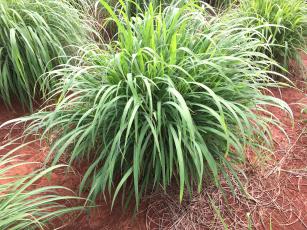Near-infrared reflectance spectroscopy as a tool for breeding Andropogon gayanusKunth for forage quality.
Near-infrared reflectance spectroscopy as a tool for breeding Andropogon gayanusKunth for forage quality.
Author(s): FONSECA, C. E. L. da; PESSOA FILHO, M. A. C. de P.; BRAGA, G. J.; RAMOS, A. K. B.; CARVALHO, M. A.; FERNANDES, F. D.; KARIA, C. T.; MACIEL, G. A.; ATHAYDE, N. B.; DESSAUNE, S. N.
Summary: Abstract: The objective was to investigate the usefulness of Near Infrared Spectroscopy (NIRS) to predict bromatological traits concentrations of gamba grass (Andropogon gayanus Kunth). Random samples from different plant genetic backgrounds, climatic conditions over years, experimental sites, and harvests were used for spectral reading and reference analysis. Partial Least Square (PLS) regressions were used for developing the models with 239 samples for calibration and 119 for external validation. Crude Protein, Ash, and Dry Matter models had R2= 0.91, 0.91, and 0.90 and low standard errors of calibration (SEC) of 8.7, 3.8, and 5.5 g.kg-1 , respectively. Neutral and Acid Detergent Fibers, and Organic Matter had R2 = 0.85, 0.88, and 0.89 and SEC valuesof10.2, 9.4, and 7.9 g.kg-1 , respectively. In vitro digestibility of dry matter had R2= 0.79 and SEC 28.0 g.kg-1 . Acid Detergent Lignin had a poor fit with R2= 0.36.A high correlation between NIRS predictions and wet lab data was observed. Models were adequate and accurate for predicting all bromatological traits but ADL. Significative differences among 51 half-sib families were detected for quality traits predicted throughPLS models. NIRS can be effectively used in gamba grass breeding programs for selecting superior forage quality genotypes. --------------------------------------------------------------------------------------------------------------------------
Publication year: 2020
Types of publication: Journal article
Unit: Embrapa Cerrados
Observation
Some of Embrapa's publications are published as ePub files. To read them, use or download one of the following free software options to your computer or mobile device. Android: Google Play Books; IOS: iBooks; Windows and Linux: Calibre.
Access other publications
Access the Agricultural Research Database (BDPA) to consult Embrapa's full library collection and records.
Visit Embrapa Bookstore to purchase books and other publications sold by Embrapa.



